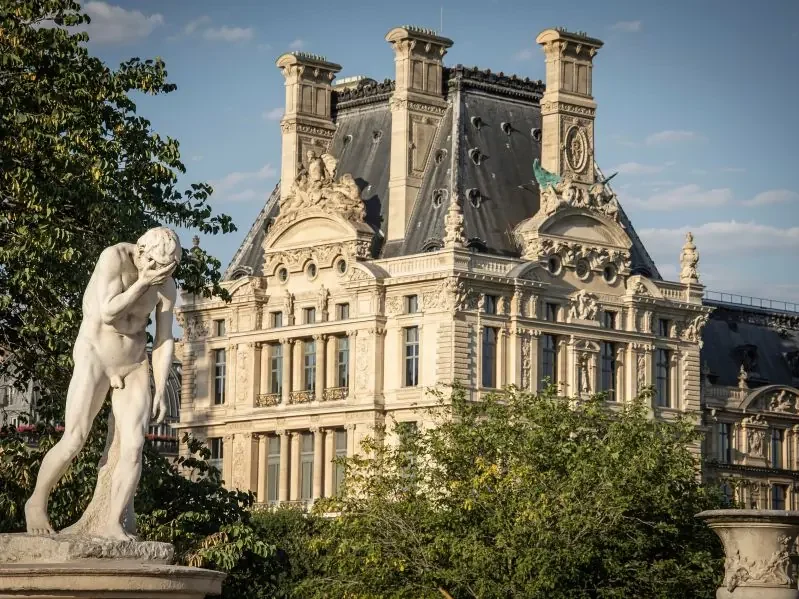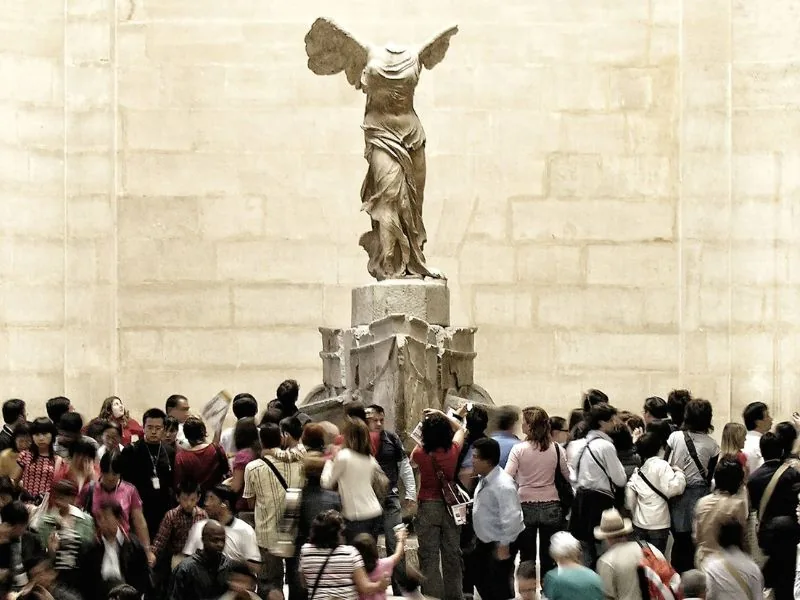Skip to content
Spanning centuries, this iconic museum also has a fascinating history of its own. In this article, we explore some intriguing facts about the Louvre.
The Louvre, located in the heart of Paris, France, is one of the most renowned and visited museums in the world. Housing an exceptional collection of art and historical artifacts, the Louvre brilliantly displays the rich cultural heritage
of humanity.
- The Louvre, also referred to as the Louvre Museum, is a hugely popular national art museum at the heart of Paris. It can be found on the banks of the River Seine in the city’s administrative district.
- The Louvre’s history dates back to the 12th century when it was originally constructed as a fortress to defend the city of Paris under King Philippe Auguste. As a medieval fortress, the Louvre featured a moat and a 98-foot (29.8
meter) tall keep.
- In the 16th century, King Francis I transformed the Louvre into a Renaissance-style palace, expanding its grandeur and using it to display his art collection. The Louvre served as a royal residence until 1682.
- The Louvre officially became a public museum during the French Revolution in 1793. At this time, the museum displayed an initial collection of 537 paintings.
- Napoleon Bonaparte played a significant role in expanding the museum’s collection during his reign. He acquired numerous valuable pieces from across Europe and beyond.
- What many people don’t know is that Napoleon’s Louvre residence can still be found at the museum. Furnished in the same style, visitors can still walk through the apartments now.
- The name “Louvre” is believed to have originated from the French word “louvre,” which refers to the structure’s distinctively shaped roof, with slanting, ventilating openings. However, it’s also argued that the name Louvre comes
from the Latin word Lupara, which means wolf. This may be due to the presence of wolves in the area.
- The Louvre is adorned with an iconic glass pyramid at its main entrance. Designed by renowned architect I.M. Pei, it was completed in 1989. The dimensions of the glass pyramid are identical to those of the Great Pyramid of Giza in
Cairo, Egypt.
- The Louvre holds the title of the world’s largest art museum, covering an astonishing area of over 782,910 square feet . That makes the Louvre 63,430 square feet bigger than the State Hermitage Museum in St. Petersburg, Russia.
- The museum’s collection comprises over 480,000 works. This includes 35,000 pieces of art ranging from ancient civilizations to the 21st century.
- The total value of the Louvre’s collection is believed to sit somewhere in the region of $35 billion. The Mona Lisa alone is worth approximately $100 million. Meanwhile, the museum itself is thought to be worth upwards of $10 billion.
As a side note: Elon Musk could buy the entire museum and all its artwork, only spending 15% of his total wealth.
- The museum has an extensive underground section, which houses the Islamic Art collection. This area also provides a unique perspective on the evolution of the Louvre’s architecture.
- The Louvre has its art conservation center. Here, experts work tirelessly to restore and preserve priceless artworks for future generations.
- In a unique cultural partnership, the Louvre Abu Dhabi in the United Arab Emirates was established, featuring rotating exhibits from the original Louvre’s extensive collection.
- The Louvre Museum is so popular that the number of visitors is now capped at 30,000 a day. As a result, more than 7.5 million people visit the museum annually (that’s almost four times the current population of Paris).
- Before the cap on visitors, the Louvre would regularly experience record-breaking days. On certain occasions, the Louvre has welcomed more than 50,000 visitors in a single day.
- The Louvre’s biggest attraction is Leonardo da Vinci’s famous painting, the Mona Lisa. Other famous works in the museum include Venus de Milo and Winged Victory of Samothrace.
- Another fascinating piece is the Sphinx of Tanis, an ancient Egyptian statue with a mysterious history. The statue was first discovered around 3000 years ago inside the ruins of an even older temple.
- As part of promotional campaigns or special events, the Louvre has occasionally offered the chance for visitors to spend the night inside the museum.
- Much less common to be pictured than the famous pyramid, the Louvre has a large Ferris wheel in front of it, the Grande Roue de Paris. The 60-meter (200-ft) wheel can be transported and sometimes visits other cities in the world.
It takes 72 hours to take down and 60 hours to set up again.

